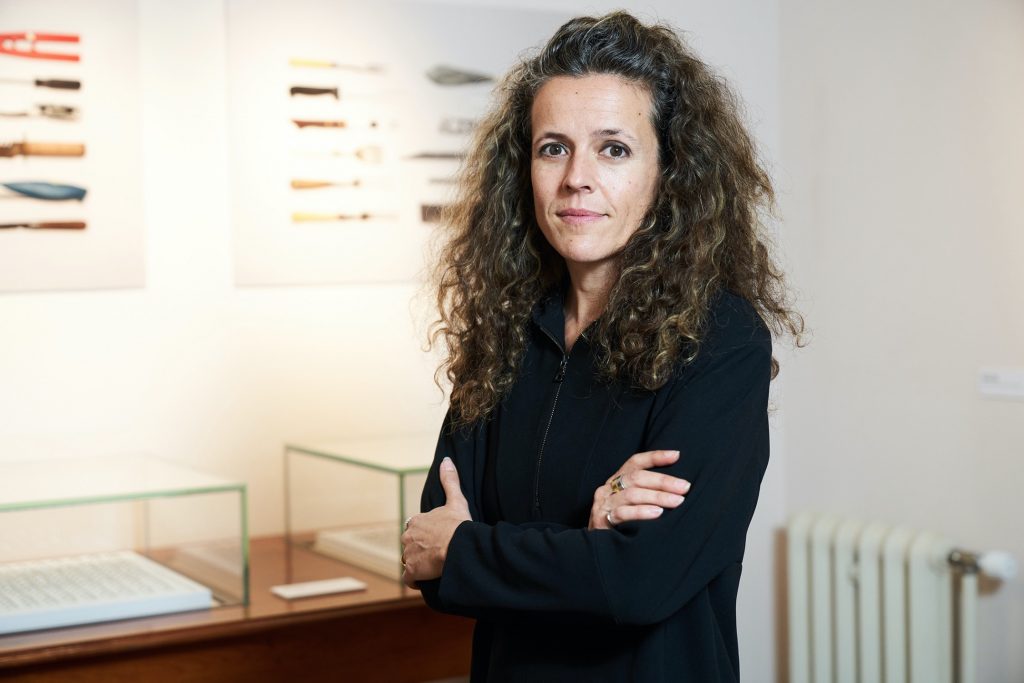I find joy and meaning in transforming everyday materials into physical metaphors, giving voice to those falling through the cracks of the system and speaking about the brutal social histories of our past. From an iron plaque depicting the haunting profile of a woman and her unborn foetus, both forged from the same iron ore that killed them, to crafting healing rings from police-confiscated knives, my work revolves around amplifying the stories that desperately need to be told using matter that matters.
I’m interested in tension; the type in old-fashioned fairy-tale, where the witch eats the kids instead of the candy, and my works always harbour a deep connection to the visceral and the uncanny. Growing up, I was deeply connected to my maternal ancestors, women who transformed materials through alchemical processes and rituals – cooking oil into soap and blood into food. These traditions and crafts left a profound impact on me. Years later, while traveling the world as a jewellery designer, I witnessed first-hand the abuse of natural resources, fuelling my yearning for justice. My experience in ethical jewellery has heightened my sensitivity to imperialist extractivism; from mining crimes and community displacement to gender inequality and environmental devastation.
Employing sculpture and large site-specific installations, as well as embroidery, goldsmithing & silversmithing, drawing, photography, video, and performance, I often utilise domestic materials loaded with significance and soaked with meanings accumulated over years of everyday use. My socially engaged practice often uses tension and trauma while creating space for individual and collective narratives.
The superpower of craft, I believe, is to seduce audiences and make complex concepts accessible. Simple materials scale my ideas down to a relatable domestic scale, creating an intimate dialogue with the audience. Channelling large social, economic, and political agency through this intimate encounter enables them to think about the world through the lens of familiar tactile materials, making it more accessible and less scary. When those simple materials are used on a monumental scale, they can aid the viewer in their journey of discovering deeper layers of engagement. I believe we can touch a thought and experience a physical response to a conceptual idea.
Creating art helps me cope with the injustices of this cruel world we live in; to process humanity’s tragic histories of abuse, exploitation, and inequality, and so I hope it will also help others. Each artwork responds to an inquiry. They are moments in time of this exciting journey we call life.
Arabel Lebrusan’s artworks are often recognised by the use of everyday materials, revealing the beauty and uncanny horrors of our present and past times. Her artworks, often sculptures and site-specific interventions, address wider issues of power relationships and exploitation. Lebrusan’s 20-year career in the arts is inextricably interwoven with her activist work in the world of jewellery.
Her latest body of work examines the extraction of natural resources and ecological grief through the lens of ecofeminism and social history. In 2021, Lebrusan was awarded a research fellowship at the Centre for Spatial, Environmental and Cultural Politics at the University of Brighton for her two-year-long project, Toxic Waves. Following this, she pursued an MA in Sculpture at the Royal College of Art in 2023.
She has exhibited and created site-specific installations at Bermondsey Project Space (2024); Standpoint (2023); The Higgins Bedford (2021); Brighton CCA (2021); Women’s Support Centre, Surrey (2021); Museum of St.Albans (2015); St.Paul’s Square, Bedford (2012); Art in Fuse, Rotterdam (2005); Lunâ Art Collective Gallery, Cebu (2004); Gesundbrunnen bunker, Berlin (2000). Her TEDx talk on ethical jewellery and her campaign raising funds for Global March against Child Labour are examples of her international activist work. She was also awarded Designer of the Year (2022) by the National Association of Jewellers, UK and was the winner of Eastern Approaches (2014) at UH Galleries, Museum of St.Albans.

Arabel Lebrusan at the Higgins Bedford. 2021